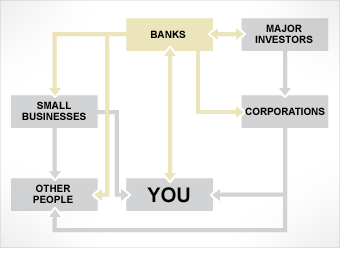
When banks do decide to lend, the borrowers, whether another bank or a consumer, are being slapped with a high premium. For example, the Federal Reserve's key interest rate for banks lending to each other is at 2% but banks have been charging other banks nearly 4% to borrow money. Those high rates trickle down to customers, both individuals and companies, on regular loans and credit cards.
NEXT: Corporations
Last updated September 30 2008: 4:33 PM ET
